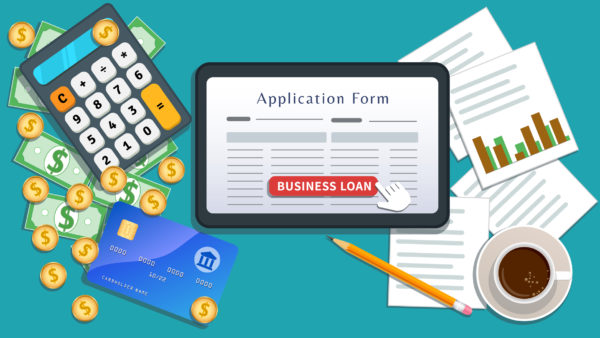
Updated March 31, 2020 to add additional information about the EIDL and EIDL advance. We are now expecting that PPP applications will be available on Friday, April 3rd.
Updated April 1, 2020 – The deferral of payroll taxes for payroll paid in 2020 is not available to any taxpayer that receives forgiveness of debts under the Paycheck Protection Program.
Updated April 3, 2020 – The SBA regulations released on 4/2/2020 indicate that 1099 contractors should not be included in the calculation of average monthly payroll costs when determining the loan size for the PPP. The rationale behind this is that 1099 contractors can apply for this loan for themselves.
Updated April 7, 2020 – The SBA released an FAQ list that clarifies that a business can use either the previous 12 months or the calendar year 2019 when determining their payroll costs to calculate their maximum loan amount.
Updated April 15, 2020 – In a stark reversal of the April 1st update, the rules have changed once again, now allowing for a deferral of payroll taxes (#2 below) up to the time that the loan forgiveness under the PPP is actually approved. This is at least eight weeks after you actually get the loan, so it makes payroll tax deferral an attractive option for businesses with substantial payroll to help manage their cash flow in the near-term.
Updated April 15, 2020 – The SBA has contacted businesses that have applied for the EIDL to inform them that the $10,000 grant that they had applied for will be limited to $1,000 x the number of employees the business had on January 31, 2020, or $10,000, whichever is lower.
To start, I hope that you’re all staying safe, healthy, and sane during these crazy times.
Our firm has been actively following and reviewing the various programs that have been put into place to help small businesses weather this storm, and we want to share our findings here with you. While there are a lot of options and continue to be daily updates and changes, we feel that there are three things that small business owners should be doing today.
This past Friday the CARES act was passed into law. While there are still a lot of moving parts, we’d like to briefly review the three programs that small business owners should be looking into to help them get through this difficult time.
1. The Paycheck Protection Program
The Paycheck Protection Program (“PPP”) allows you to apply for a loan from your bank for the lesser of:
- 2.5 times your average monthly payroll costs, calculated using the previous 12 months or calendar year 2019
- $10 million
Note – When calculating payroll costs, they are limited to an annual salary of $100k per employee
The loan is 100% guaranteed by the Small Business Administration (“SBA”), does not require a personal guarantee or collateral, and has an interest rate that is capped at 4%.
That’s not even the best part. Borrowers are eligible for total loan forgiveness if, for the 8 weeks beginning on the origination date of the loan, the proceeds are used for payroll, rent, utilities, or mortgage interest payments. As noted above, eligible payroll costs do not include annual compensation greater than $100k per employee.
However, the amount of the loan may be reduced if you decrease your employee headcount as compared to last year or if you reduce the pay of any employee by more than 25% as compared to the last calendar quarter. However, if you rehire workers previously laid off as a result of the COVID-19 crisis, you will not be penalized for having a reduced payroll for the beginning of the period.
Ready to apply? The next step is to get in touch with your banker and let them know of your intent to apply for this loan. We are hopeful that banks will have the applications ready to go this week. In the meantime, take a look at a sample application so that you can prepare the information you’ll need in advance. Not sure about getting started on your own? Let us know, we can help you through this process.
2. Deferring Your Payroll Taxes
The second program allows you to defer payment of the employer portion of Social Security taxes (not Medicare) that are normally paid in with each payroll. This is in effect for any payroll paid after the date the law was signed, March 27, 2020, and continues for all payroll through the end of the year. You must pay 50% of the deferred taxes by the end of 2021 and the balance by the end of 2022. This effectively serves as interest free loan from the federal government. This program is not available to taxpayers who have received forgiveness of debt under the Paycheck Protection Program, however, it is available to taxpayers until the forgiveness is actually approved.
3. Applying for an Emergency Economic Injury Disaster Loan
In addition to the programs detailed above, you can apply online for the Emergency Economic Injury Disaster Loan (“EIDL”). An EIDL can incorporate an EIDL Advance, which is an advance of up to $10,000 on an EIDL loan that, if approved, can be used for payroll and other operating expenses and will be forgiven. The amount of the grant is calculated as $1,000 x the number of employees the you had as of January 31, 2020 (limited to a maximum of $10,000). The advance may be available even if your EIDL application was declined or is still pending. Businesses can benefit from both the PPP and an EIDL as long as the funds are not used for the same purposes/time periods.
In Conclusion
These are crazy and unprecedented times, and the government is trying to come up with new ways to stabilize the economy and keep businesses afloat. With the launch of these programs, the ball is now in your court to apply for and take advantage of the options that they have made available. That said, you don’t need to do this alone! If you have any questions or concerns, let us know. We’re here to help you and your business navigate this challenging time.
